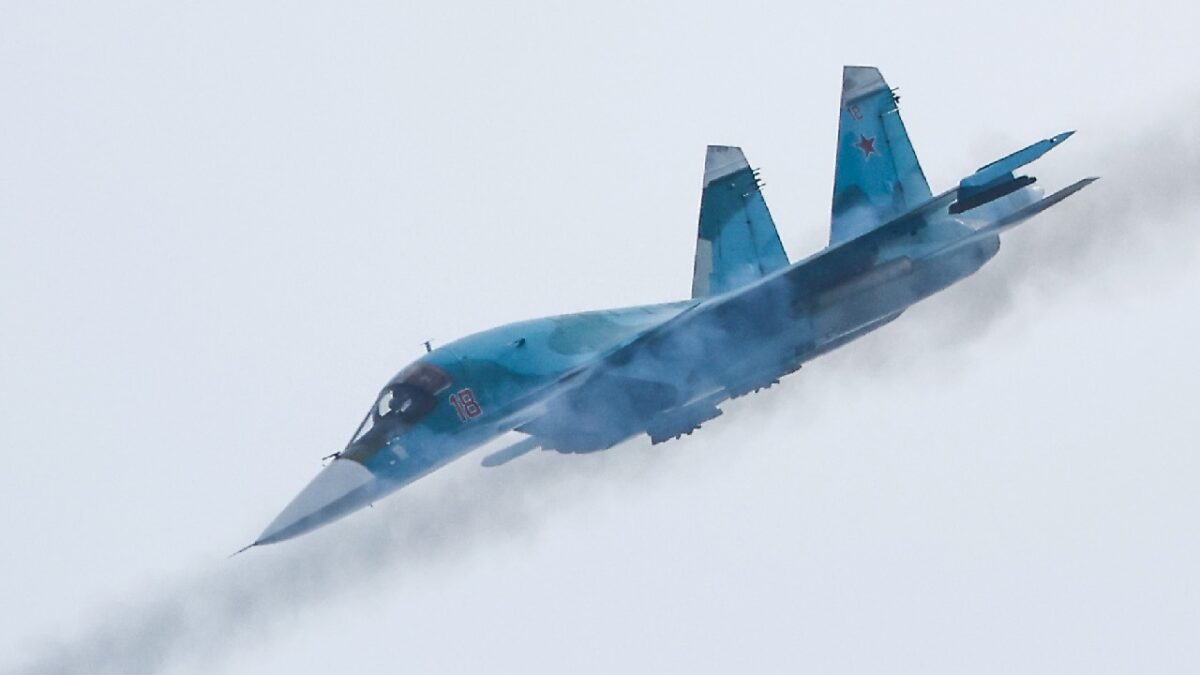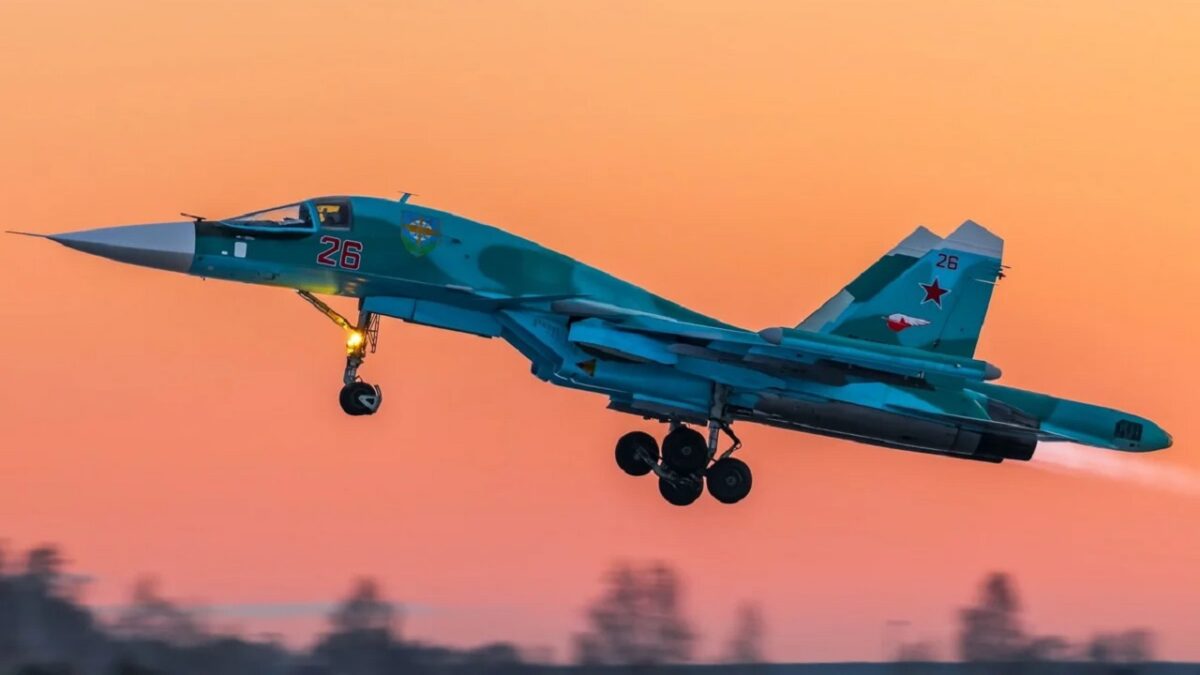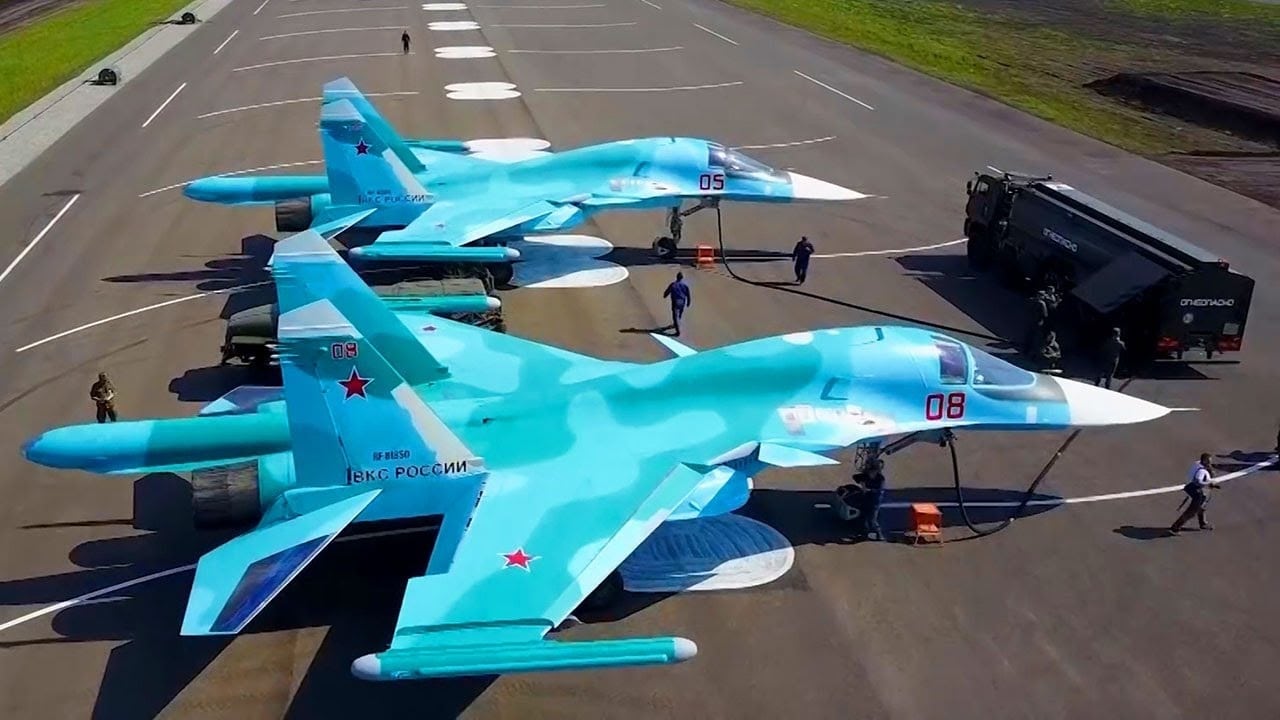As social media footage of what appears to be the wreckage of a downed Russian Su-34 emerges, international attention has been once again turned to the aircraft, which is one of Russia’s newest strike aircraft.
What Happened to the Downed Russian Su-34?
On July 18, footage began to emerge on social media – as you can see below, and we can’t independently verify – of the crash site near the Russian-occupied city of Alchevsk in Ukraine’s Luhansk Oblast of an unknown military aircraft, in which the social media user called the downed aircraft Ukrainian.
However, other angles of the crash site told a different story, as they appeared to show Russian Aerospace Forces markings.
Ukrainian media sources have themselves begun to circulate the story, additionally claiming that the aircraft had been shot down by Russian or Russian-backed separatist anti-aircraft fire. Footage from the previous night, which was also circulated on social media, appeared to show the actual shootdown of the aircraft by Russian or Russian-backed separatist air defenses. A snippet of the aircraft’s serial number found in pictures of the wreckage indicates that the Su-34 in question was a particularly modernized example of the aircraft.
What is the Su-34?
The Su-34 Fullback (as it is known under its NATO designation) is a strike aircraft designed in the twilight years of the Soviet Union which did not actually enter service until 2014.
As an independent aircraft model, the Su-34 was spun out of the Su-27 class of fighter aircraft and was initially designated as the Su-27IB.
While it had its first flight in 1990, the aircraft would not see combat service until the 2008 Russo-Georgian War.
Unlike its Su-27 forbearer, the Su-34 is a two-seat, heavily armored aircraft designed to strike ground targets.
Its tail section remains largely faithful to the design of the Su-27 and is propelled by two afterburning AL-31F turbofan engines.
The aircraft’s so-called “platypus nose” hosts the Fullback’s Sh141 radar suite, which is designed to allow the aircraft to engage ground and air targets alike.
In addition to its main 30mm GSh-301 gun, the Su-34 possesses 10 hardpoints which can carry bombs, rockets, or missiles for a variety of mission types.
How Has the Su-34 Otherwise Performed in Ukraine?
According to the open-source tracking blog Oryxspionkop, eleven Su-34s have been shot down over the course of Russia’s 2022 invasion of Ukraine to date (including that which was reportedly shot down over Alchevsk).
On balance, the Fullback’s performance in Ukraine has been largely lackluster, and the aircraft has not lived up its presumed capabilities.

A Russian Sukhoi Su-34 fighter-bomber fires missiles during the Aviadarts competition, as part of the International Army Games 2021, at the Dubrovichi range outside Ryazan, Russia August 27, 2021. REUTERS/Maxim Shemetov

Russia’s Su-34 fighter-bomber. Image Credit: Creative Commons.
According to UK Secretary of State for Defence Ben Wallace, crashed Su-34s have been found with civilian GPS systems “taped to [their] dashboards” to compensate for their unsatisfactory built-in GPS systems.
Russian Su-34 Fullbacks saw substantial service in Russia’s intervention in the Syrian Civil War (where there was no serious anti-aircraft threat to speak of), but have had much more trouble fighting in Ukraine’s contested airspace.
@vasyaba7♬ оригинальный звук – vasyaba7
Despite its string of mishaps and losses in Ukraine, the Su-34 will likely remain in Russian service for some time. If the most recent lost Su-34 was indeed shot down by friendly forces, that would be but the latest indictment of Russia’s air campaign and its many issues.
Wesley Culp is a Research Fellow at the Center for the Study of the Presidency and Congress. He regularly writes on Russian and Eurasian leadership and national security topics and has been published in The Hill as well as in the Diplomatic Courier. He can be found on Twitter @WesleyJCulp.

